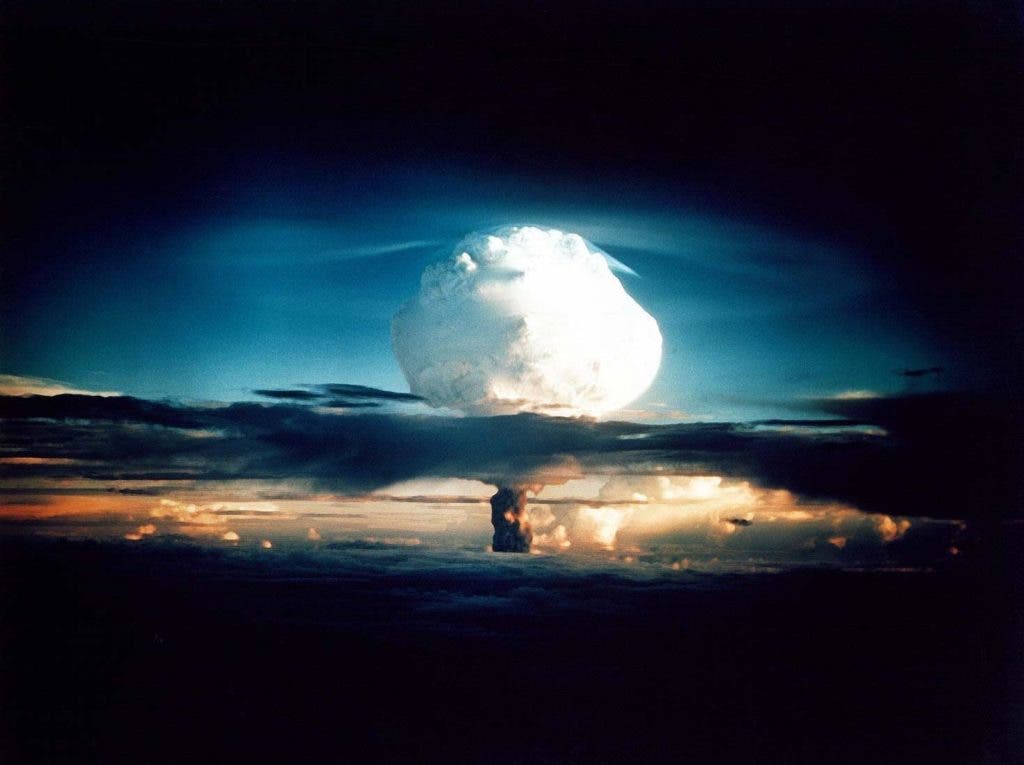Viable fusion may be just around the corner, powered on by immensely powerful lasers. Even better, a newly technique requires no radioactive fuel and produces no toxic or radioactive waste.

Image credits National Nuclear Security Administration / Nevada Site Office.
One of the brightest burning dreams of sci-fi enthusiasts the world over is closer to reality than we’ve ever dared hope: sustainable fusion on Earth. Drawing on advances in high-power, high-intensity lasers, an international research team led by Heinrich Hora, Emeritus Professor of Theoretical Physics at UNSW Sydney, is close to bringing hydrogen-boron reactions to a reactor near you.
Energy from scratch
In a recent paper, Hora argues that the path to hydrogen-boron fusion is now viable and closer to implementation that other types of fusion we’re toying with — such as the deuterium-tritium fusion system being developed by the US National Ignition Facility (NIF) and the International Thermonuclear Experimental Reactor under construction in France.
Hydrogen-boron fusion has several very appealing properties which Hora believes puts it at a distinct advantage compared to other systems. For one, it relies on precise, rapid bursts from immensely powerful lasers to squish atoms together. This dramatically simplifies reactor construction and reaction maintenance. For comparison, its ‘competitors’ have to heat fuel to the temperatures of the Sun and then power massive magnets to contain this superhot plasma inside torus-shaped (doughnut-like) chambers.
Furthermore, hydrogen-boron fusion doesn’t release any neutrinos in its primary reaction — in other words, it’s not radioactive. It requires no radioactive fuel and produces no radioactive waste. And, unlike most other energy-generation methods which heat water as an intermediary media to spin turbines — such as fossil-fuel or nuclear — hydrogen-boron fusion releases energy directly into electricity.
All of this goody goodness comes at a price, however, which always kept them beyond our grasp. Hydrogen-boron fusion reactions require immense pressures and temperatures — they’re only comfortable upwards of 3 billion degrees Celsius or so, some 200 times hotter than the Sun’s core.
Back in the 1970s, Hora predicted that this fusion reaction should be feasible without the need for thermal equilibrium, i.e. in temperature conditions we can actually reach and maintain. We had nowhere near the technological basis needed to prove his theory back then, however.
Why not blast it with a laser?

The dramatic advances we’ve made in laser technology over the last few decades are making the two-laser approach to the reaction Hora developed back then tangibly possible today.
Experiments recently performed around the world suggest that an ‘avalanche’ fusion reaction could be generated starting with bursts of a petawatt-scale laser pulse packing a quadrillion watts of power. If scientists could exploit this avalanche, Hora said, a breakthrough in proton-boron fusion was imminent.
“It is a most exciting thing to see these reactions confirmed in recent experiments and simulations,” he said.
“Not just because it proves some of my earlier theoretical work, but they have also measured the laser-initiated chain reaction to create one billion-fold higher energy output than predicted under thermal equilibrium conditions.”
Working together with 10 colleagues spread over six countries of the globe, Hora created a roadmap for the development of hydrogen-boron fusion based on his design. The document takes into account recent breakthroughs and points to the areas we still have to work on developing a functional reactor. The patent to the process belongs to HB11 Energy, an Australian-based spin-off company, which means it’s not open for everyone to experiment.
“If the next few years of research don’t uncover any major engineering hurdles, we could have a prototype reactor within a decade,” said Warren McKenzie, managing director of HB11.
“From an engineering perspective, our approach will be a much simpler project because the fuels and waste are safe, the reactor won’t need a heat exchanger and steam turbine generator, and the lasers we need can be bought off the shelf,” he added.
The paper “Road map to clean energy using laser beam ignition of boron-hydrogen fusion” has been published in the journal Laser and Particle Beams.






